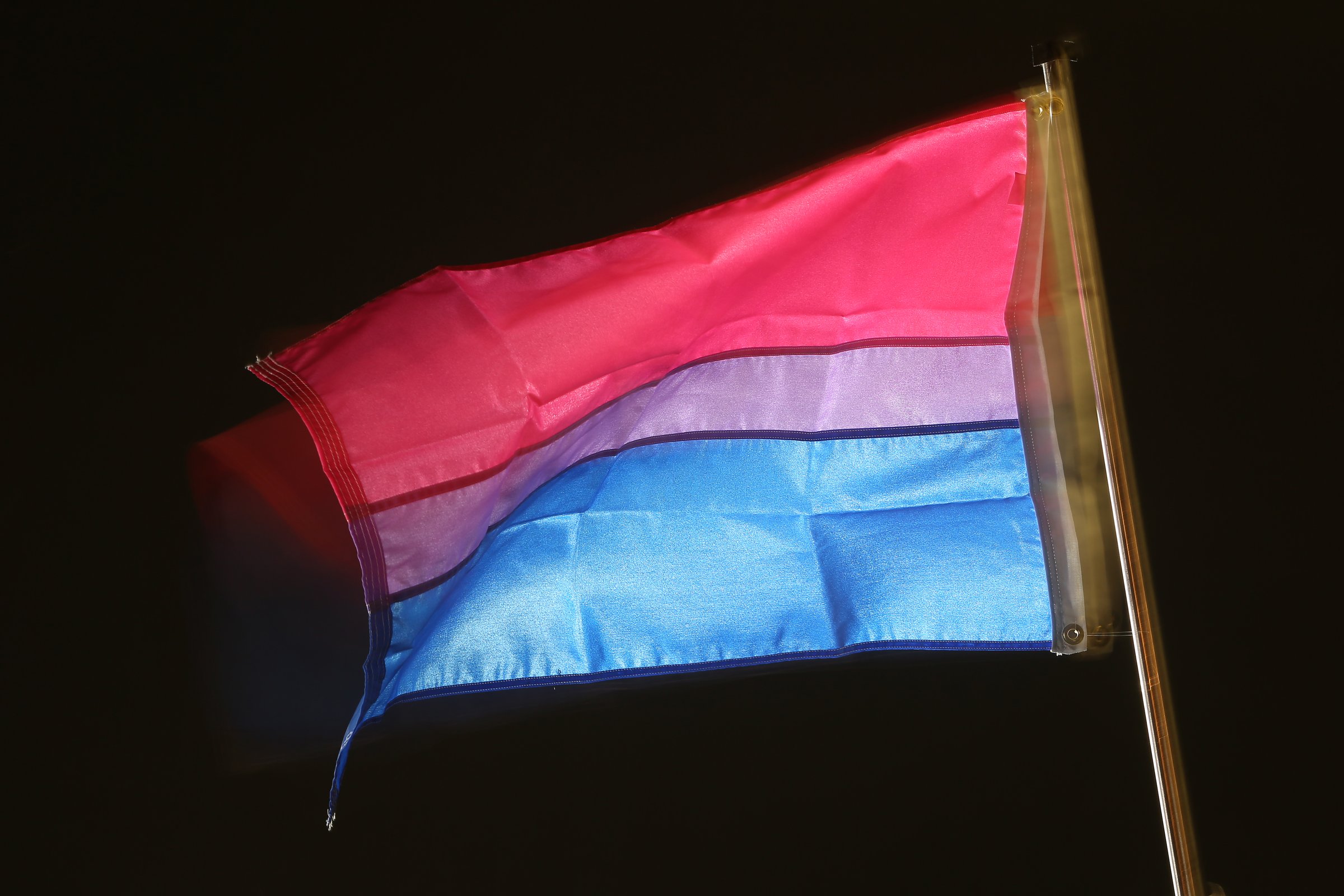
A fixture of Pride Month marches is the parade of colorful flags. The rainbow flag, designed in the 1970s by Gilbert Baker, is best-known, and while it’s embraced by the LGBTQ community, there are also flags that people of certain gender identities rally around. Among those is the bisexuality pride flag.
Designed in 1998 by bisexuality activist Michael Page, the flag is made up of a layer of fuchsia at the top to represent females, a layer of royal blue at the bottom to represent males, and a lavender or purple stripe across the middle to represent attraction to both males and females.
“I feel like it’s all shades of my sexuality; like I am attracted to women; I am attracted to men; and I am attracted to people without thinking about what their gender is,” says Wendy Curry, 55, former President of BiNet USA, an organization promoting bisexuality awareness, who helped promote the flag in the late ‘90s. “But I think the idea that there’s more than one color to our sexuality is reflected in the flag and I love that.”
A 2021 Gallup poll found that more than half of LGBT adults (54.6%) identify as bisexual.
The flag was part of an effort to start an annual Bisexuality Visibility Day—or Bi Day for short—which, the bisexual community began marking every Sept. 23 starting in 1999. It came at a time when activists were working to bring the bisexual community together online in chatrooms. The bisexuality pride flag was seen as just one way to help form a community among bisexual people.
As Curry recalls the rationale for a flag back then, “We need something so that when we go to a pride parade, people know that it’s us, and we’re not hidden.”
Fellow BiNet board member and activist Gigi Wilbur, 66, who also helped promote the flag in the 90s, saw the flag as a bold statement in the era of “Don’t Ask, Don’t Tell.” The topic of gays and lesbians serving in the military was a hot-button political issue at the time, and he saw the flag as flying in the face of that policy—and making sure bisexual people were included in those conversations. “And so I think part of that was what motivated this to become more visible and say, ‘Yes, we do exist and we should have the same rights as everybody else,’” Wilbur says.
Overall, the flag and the awareness day were designed to reach out to people who may be looking for that kind of community.
“I think there are many rural communities where people have feelings about being bi but think, ‘Oh, am I the only one?’” says Wilbur. He hopes bisexual people will see the flag in pride parade coverage and think, “’I’m not alone.’”
More Must-Reads from TIME
- Cybersecurity Experts Are Sounding the Alarm on DOGE
- Meet the 2025 Women of the Year
- The Harsh Truth About Disability Inclusion
- Why Do More Young Adults Have Cancer?
- Colman Domingo Leads With Radical Love
- How to Get Better at Doing Things Alone
- Michelle Zauner Stares Down the Darkness
Write to Olivia B. Waxman at olivia.waxman@time.com